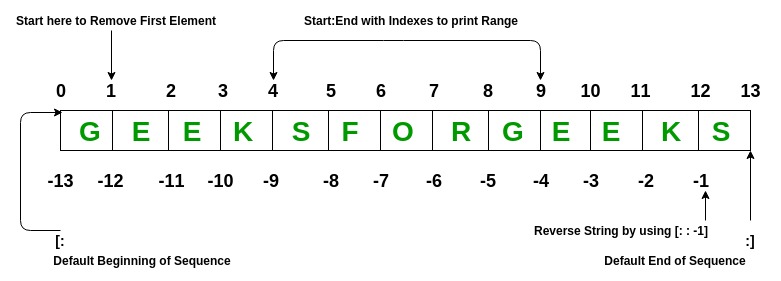Python 元组
元组是 Python 对象的集合,很像列表。存储在元组中的值序列可以是任何类型,并且它们由整数索引。
元组的值在语法上由“逗号”分隔。虽然这不是必需的,但更常见的是通过关闭括号中的值序列来定义元组。这有助于更轻松地理解 Python 元组。
创建元组
在 Python 中,元组是通过放置由“逗号”分隔的值序列创建的,使用或不使用括号对数据序列进行分组。
注意:不使用括号创建 Python 元组称为元组打包。
用于演示在元组中添加元素的 Python 程序。
# Creating an empty Tuple
Tuple1 = ()
print("Initial empty Tuple: ")
print(Tuple1)
# Creating a Tuple
# with the use of string
Tuple1 = ('Geeks', 'For')
print("\nTuple with the use of String: ")
print(Tuple1)
# Creating a Tuple with
# the use of list
list1 = [1, 2, 4, 5, 6]
print("\nTuple using List: ")
print(tuple(list1))
# Creating a Tuple
# with the use of built-in function
Tuple1 = tuple('Geeks')
print("\nTuple with the use of function: ")
print(Tuple1)输出:
Initial empty Tuple:
()
Tuple with the use of String:
('Geeks', 'For')
Tuple using List:
(1, 2, 4, 5, 6)
Tuple with the use of function:
('G', 'e', 'e', 'k', 's')创建具有混合数据类型的元组。
元组可以包含任意数量的元素和任意数据类型(如字符串、整数、列表等)。也可以用单个元素创建元组,但这有点棘手。括号中只有一个元素是不够的,必须有一个尾随的“逗号”才能使其成为一个元组。
# Creating a Tuple
# with Mixed Datatype
Tuple1 = (5, 'Welcome', 7, 'Geeks')
print("\nTuple with Mixed Datatypes: ")
print(Tuple1)
# Creating a Tuple
# with nested tuples
Tuple1 = (0, 1, 2, 3)
Tuple2 = ('python', 'geek')
Tuple3 = (Tuple1, Tuple2)
print("\nTuple with nested tuples: ")
print(Tuple3)
# Creating a Tuple
# with repetition
Tuple1 = ('Geeks',) * 3
print("\nTuple with repetition: ")
print(Tuple1)
# Creating a Tuple
# with the use of loop
Tuple1 = ('Geeks')
n = 5
print("\nTuple with a loop")
for i in range(int(n)):
Tuple1 = (Tuple1,)
print(Tuple1)输出:
Tuple with Mixed Datatypes:
(5, 'Welcome', 7, 'Geeks')
Tuple with nested tuples:
((0, 1, 2, 3), ('python', 'geek'))
Tuple with repetition:
('Geeks', 'Geeks', 'Geeks')
Tuple with a loop
('Geeks',)
(('Geeks',),)
((('Geeks',),),)
(((('Geeks',),),),)
((((('Geeks',),),),),)创建元组的复杂性:
Time complexity: O(1)
Auxiliary Space : O(n)
访问元组
元组是不可变的,通常,它们包含一系列异构元素,这些元素可以通过解包或索引访问(或者甚至在命名元组的情况下通过属性访问)。列表是可变的,它们的元素通常是同类的,可以通过遍历列表来访问。
注意:在元组的解包中,左侧变量的数量应该等于给定元组 a 中的值的数量。
# Accessing Tuple
# with Indexing
Tuple1 = tuple("Geeks")
print("\nFirst element of Tuple: ")
print(Tuple1[0])
# Tuple unpacking
Tuple1 = ("Geeks", "For", "Geeks")
# This line unpack
# values of Tuple1
a, b, c = Tuple1
print("\nValues after unpacking: ")
print(a)
print(b)
print(c)输出:
First element of Tuple:
G
Values after unpacking:
Geeks
For
Geeks访问元组中元素的复杂性:
Time complexity: O(1)
Space complexity: O(1)
元组的连接
元组的连接是连接两个或多个元组的过程。连接是通过使用“+”运算符完成的。元组的连接总是从原始元组的末尾开始。其他算术运算不适用于元组。
注意 -只有相同的数据类型才能通过串联组合,如果将列表和元组组合在一起,则会出现错误。

# Concatenation of tuples
Tuple1 = (0, 1, 2, 3)
Tuple2 = ('Geeks', 'For', 'Geeks')
Tuple3 = Tuple1 + Tuple2
# Printing first Tuple
print("Tuple 1: ")
print(Tuple1)
# Printing Second Tuple
print("\nTuple2: ")
print(Tuple2)
# Printing Final Tuple
print("\nTuples after Concatenation: ")
print(Tuple3)输出:
Tuple 1:
(0, 1, 2, 3)
Tuple2:
('Geeks', 'For', 'Geeks')
Tuples after Concatenation:
(0, 1, 2, 3, 'Geeks', 'For', 'Geeks')Time Complexity: O(1)
Auxiliary Space: O(1)
元组切片
对元组进行切片是为了从元组中获取特定范围或子元素切片。也可以对列表和数组进行切片。列表中的索引导致获取单个元素,而切片允许获取一组元素。
注意-负增量值也可用于反转元组的顺序。

# Slicing of a Tuple
# Slicing of a Tuple
# with Numbers
Tuple1 = tuple('GEEKSFORGEEKS')
# Removing First element
print("Removal of First Element: ")
print(Tuple1[1:])
# Reversing the Tuple
print("\nTuple after sequence of Element is reversed: ")
print(Tuple1[::-1])
# Printing elements of a Range
print("\nPrinting elements between Range 4-9: ")
print(Tuple1[4:9])输出:
Removal of First Element:
('E', 'E', 'K', 'S', 'F', 'O', 'R', 'G', 'E', 'E', 'K', 'S')
Tuple after sequence of Element is reversed:
('S', 'K', 'E', 'E', 'G', 'R', 'O', 'F', 'S', 'K', 'E', 'E', 'G')
Printing elements between Range 4-9:
('S', 'F', 'O', 'R', 'G')在元组中遍历/搜索元素的复杂性:
Time complexity: O(1)
Space complexity: O(1)
删除元组
元组是不可变的,因此它们不允许删除其中的一部分。使用 del() 方法删除整个元组。
注意 -删除后打印元组会导致错误。
# Deleting a Tuple
Tuple1 = (0, 1, 2, 3, 4)
del Tuple1
print(Tuple1)Traceback (most recent call last): File “/home/efa50fd0709dec08434191f32275928a.py”, line 7, in print(Tuple1) NameError: name ‘Tuple1’ is not defined
内置方法
| 内置方法 | 描述 |
|---|---|
| index(_). | 在元组中查找并返回可用的给定值的索引 |
| count(_). | 返回指定值的出现频率 |
内置函数
| 内置函数 | 描述 |
|---|---|
| all(). | 如果所有元素都为真或元组为空,则返回真 |
| any(). | 如果元组的任何元素为真,则返回真。如果元组为空,则返回 false |
| len(). | 返回元组的长度或元组的大小 |
| enumerate(). | 返回元组的枚举对象 |
| max(). | 返回给定元组的最大元素 |
| min(). | 返回给定元组的最小元素 |
| sum(). | 总结元组中的数字 |
| sorted(). | 输入元组中的元素并返回一个新的排序列表 |
| tuple(). | 将可迭代对象转换为元组。 |
元组 VS 列表:
| 相似之处 | 差异 |
|---|---|
| 可用于列表和元组的函数:len()、max()、min()、sum()、any()、all()、sorted() | 不能用于元组的方法:附加(),插入(),删除(),弹出(),清除(),排序(),反向() |
| 可用于列表和元组的方法:计数(),索引() | 我们通常对异构(不同)数据类型使用“元组”,对同类(相似)数据类型使用“列表”。 |
| 元组可以存储在列表中。 | 迭代“元组”比在“列表”中迭代更快。 |
| 列表可以存储在元组中。 | “列表”是可变的,而“元组”是不可变的。 |
| “元组”和“列表”都可以嵌套。 | 包含不可变元素的元组可以用作字典的键。 |
原文链接:codingdict.net
